Holistic Pain Management Techniques Without Surgery
November 12, 2025
10 min

Understanding Holistic Pain Management Without Surgery
Holistic Pain Management Overview
Holistic pain management focuses on treating the whole person—body, mind, and spirit—rather than just addressing symptoms. It integrates therapies like chiropractic care, acupuncture, massage, mindfulness meditation, yoga, and tai chi to relieve pain naturally and improve overall well-being. These non-invasive methods aim to realign the body, reduce inflammation, and enhance physical function.
Importance of Non-Surgical Options for Chronic Pain
Chronic pain affects millions and often requires ongoing management. Non-surgical treatments provide safer alternatives to medication and invasive procedures, lowering risks of side effects and dependency. By addressing root causes, such as spinal alignment or muscle tension, holistic therapies help break the chronic pain cycle and support long-term recovery.
Benefits for Musculoskeletal Health
Holistic approaches improve musculoskeletal health by enhancing joint mobility, muscle flexibility, and nervous system function. Regular practices, such as stretching, physical activity, and stress reduction, support tissue repair and reduce inflammation. This comprehensive care leads to pain relief, improved daily function, and better quality of life without surgery.
Back in Action Bodyworks: Personalized Holistic Care for Musculoskeletal Health
What holistic approaches does Back in Action Bodyworks use for musculoskeletal health?
Back in Action Bodyworks employs a range of holistic musculoskeletal health approaches to support musculoskeletal health, with chiropractic adjustments being the core component. These manual therapies, including spinal manipulation and soft tissue work, are rooted in evidence-based practices and are effective for managing common issues such as low back pain, neck pain, and headaches.
The practice develops personalized wellness plans tailored to individual needs, incorporating exercise routines, activity modification, and lifestyle guidance. This comprehensive plan targets the whole person—beyond just symptom relief—to optimize long-term health and function through daily musculoskeletal health advice.
Integration with complementary therapies, such as acupuncture and massage therapy benefits, further enhances pain relief and promotes healing. By combining these modalities, Back in Action Bodyworks offers a multifaceted approach that leverages the benefits of both chiropractic care and natural holistic approaches to pain management, including mindfulness-based interventions for pain management.
How does Back in Action Bodyworks integrate collaborative healthcare?
Back in Action Bodyworks prioritizes collaboration with other healthcare providers to ensure safe, coordinated, and effective treatment plans. This team-oriented approach supports comprehensive care, bringing together expertise from chiropractic, physical therapy, nutrition, and behavioral health professionals when appropriate.
Overall, Back in Action Bodyworks blends skilled manual therapies with personalized, integrative strategies to deliver holistic musculoskeletal health care tailored to each patient's unique needs.
Expert Leadership at Back in Action Bodyworks: Dr. Jane Smith’s Role and Experience

Who leads Back in Action Bodyworks and what is their experience?
Back in Action Bodyworks is led by Dr. Jane Smith, a seasoned chiropractor with over 20 years of experience specializing in holistic musculoskeletal health. She holds a Doctor of Chiropractic degree from Palmer College of Chiropractic and has pursued extensive postgraduate training in natural health and functional medicine.
Leadership and credentials of Dr. Jane Smith
Dr. Smith’s leadership is grounded in her deep expertise and commitment to patient-centered care. She combines a strong clinical foundation with advanced knowledge in complementary therapies for chronic pain, ensuring patients receive comprehensive treatment plans. Her credentials reflect a dedication to continual learning and excellence in holistic health.
Experience and educational background
Throughout her career, Dr. Smith has worked extensively with patients suffering from sports injuries, chronic pain, and wellness challenges. Her educational background and hands-on experience allow her to design personalized, effective approaches that incorporate chiropractic adjustments, physical therapy, and natural pain relief methods, consistent with best practices in holistic pain management approaches.
Approach to patient-centered, holistic care
At Back in Action Bodyworks, Dr. Smith emphasizes individualized treatment plans that focus on the whole person—not just symptoms. This holistic approach integrates chiropractic care with complementary techniques such as acupuncture and massage therapy, massage, and mindful movement therapies. Dr. Smith believes in empowering patients through education, lifestyle recommendations, and collaborative care to enhance mobility, reduce pain, and promote lasting wellness.
Comprehensive Musculoskeletal Health Services at Back in Action Bodyworks

What types of musculoskeletal health services are offered at Back in Action Bodyworks?
At Back in Action Bodyworks, patients can access a wide range of services designed to enhance musculoskeletal health through a holistic approach. Their offerings include skilled chiropractic adjustments which focus on realigning the spine and joints to relieve pain and improve overall body function.
Chiropractic adjustments and injury rehabilitation
These adjustments are crucial for restoring alignment, which helps reduce nerve pressure and supports natural healing. Alongside these, the practice provides specialized injury rehabilitation aimed at aiding recovery from musculoskeletal injuries by improving strength, flexibility, and mobility.
Posture correction and wellness counseling
Back in Action Bodyworks also addresses postural issues. Correcting poor posture helps prevent chronic problems and minimizes strain on muscles and joints. Complementing physical treatments, wellness counseling guides patients on lifestyle modifications, ergonomic practices, and self-care habits to sustain musculoskeletal health. For more musculoskeletal health tips, patients can learn about exercises and hydration for joint lubrication.
Benefits for chronic pain and mobility enhancement
These combined services offer significant benefits for individuals dealing with chronic pain and limited mobility. Patients often experience pain relief, improved range of motion, and enhanced quality of life. This comprehensive, patient-centered approach ensures that care is tailored to individual needs, fostering long-term wellness and functional independence. For additional insights on holistic pain management approaches, including mindfulness-based interventions for pain management, mind-body techniques and complementary therapies, patients can explore various options available to support musculoskeletal health.
Tailoring Wellness Plans: A Holistic and Individualized Approach

How does Back in Action Bodyworks customize wellness plans for each patient?
Back in Action Bodyworks takes a comprehensive approach to personalize wellness plans by assessing each patient’s unique musculoskeletal condition, lifestyle, and health objectives. This ensures treatment strategies are precisely aligned with the individual's needs. For guidance on musculoskeletal health tips, see daily musculoskeletal health advice including prevention and exercises.
How is chiropractic care integrated with complementary therapies?
Chiropractic care is central yet seamlessly integrated with complementary therapies such as massage, acupuncture, and mindfulness techniques. This blend supports optimal spinal function while promoting relaxation and natural healing, providing a multifaceted path to pain relief. Explore more about chiropractic care services including chiropractic care, acupuncture therapy, massage therapy options, and integrative musculoskeletal health, as well as Complementary health approaches for chronic pain.
What role do exercise, nutrition, and mindfulness play in pain relief?
Therapeutic exercises—including yoga and Pilates—are customized to strengthen core muscles and improve flexibility, helping reduce pain and improve mobility. Nutritional guidance focuses on anti-inflammatory foods to support tissue health and recovery. Mindfulness practices enhance pain management by reducing stress and improving the nervous system’s response to discomfort. For holistic strategies involving Mindfulness-based interventions for pain management, gentle physical activities, and anti-inflammatory diets, refer to Holistic Pain Management Approaches and Holistic approach to pain management.
How are wellness plans monitored and adjusted over time?
Regular follow-ups allow practitioners to monitor patient progress closely. Treatment plans are adjusted as needed, incorporating new assessments to maintain effectiveness and address evolving health conditions. This dynamic care model maximizes patient outcomes and supports long-term wellness. For more on nonsurgical pain management methods and Non-Surgical Pain Relief Options, see adaptable treatment modalities including physical therapy, medications, topical products, and regenerative medicine options.
Effective Complementary Therapies for Chronic Pain Management

How do acupuncture, massage, and spinal manipulation aid pain relief?
Acupuncture involves inserting fine needles into specific points on the body to stimulate nerves and muscles, promoting pain relief and healing. Research supports acupuncture for back and neck pain as more effective than no treatment or sham acupuncture. Massage therapy helps relax muscles, reduce tension, and alleviate stress, which in turn lessens pain. Spinal manipulation by skilled chiropractors realigns the spine and neck, improving function and reducing musculoskeletal pain. Learn more about chiropractic care services and massage therapy options.
What roles do mindfulness meditation and cognitive behavioral therapy play?
Mindfulness meditation and cognitive behavioral therapy (CBT) focus on decreasing pain intensity and improving physical and emotional functioning. These mindfulness-based interventions for pain management and mind-body techniques lower stress and muscle tension, altering pain perception positively. They also assist in managing the psychological effects of chronic pain, such as anxiety and depression. For more on mindfulness and cognitive behavioral therapy, see these resources.
Which herbal supplements have pain-relieving properties?
Certain herbal preparations show promise for pain relief. Topical creams containing cayenne are used to ease muscle and joint pains. Oral supplements like white willow bark are known for their anti-inflammatory effects. Other herbs such as turmeric, ginger, peppermint oil, and boswellia also contribute to reducing inflammation and improving mobility.
How can complementary approaches be safely integrated?
Complementary therapies are generally safe when performed by licensed, experienced practitioners and tailored to individual health conditions. However, some dietary supplements may interact with medications or have side effects. It's important for patients to consult healthcare providers before starting new treatments or combining therapies. This ensures personalized, safe, and effective pain management strategies aligned with holistic musculoskeletal care principles. For guidance on the safety of complementary pain treatments, see additional information.
Lifestyle and Mind-Body Techniques to Enhance Non-Surgical Pain Management

How does exercise, including yoga and Tai Chi, contribute to pain relief?
Engaging in gentle physical activities such as Yoga and tai chi for low-back pain supports musculoskeletal health by improving strength, flexibility, and balance. These practices also help regulate the nervous system, which can decrease the emotional impact of chronic pain and reduce overall pain perception. Both yoga and Tai Chi have been scientifically recommended for chronic low-back pain and osteoarthritis, aiding in improved physical function and decreased discomfort. For more holistic exercise options, see Gentle Physical Activities for Pain Relief.
What dietary strategies aid in managing chronic pain?
A diet rich in anti-inflammatory foods is vital for natural pain relief. Incorporating berries, leafy greens, omega-3 fatty acids from sources like salmon and walnuts, and spices such as turmeric can help reduce inflammation associated with musculoskeletal conditions. Avoiding processed foods, trans fats, and refined sugars further supports pain management by lessening systemic inflammation. Explore Anti-Inflammatory Diets and Proper nutrition for pain alleviation for additional guidance.
How can meditation and mindfulness reduce pain?
Mindfulness-based interventions for pain management and meditation techniques lower stress and muscle tension, which play a role in intensifying pain signals. Methods like breath awareness, body scans, and guided imagery encourage relaxation and improve coping skills, thereby decreasing pain intensity. These mind-body practices stimulate the release of endorphins and modify pain perception in the brain. Learn more about Mindfulness-based interventions for pain management and Mindfulness and meditation.
What roles do sleep and social support play in holistic pain health?
Restorative sleep is essential for healing and maintaining musculoskeletal health. Addressing sleep issues such as sleep apnea can speed recovery and lessen pain severity. Equally important, social support networks and counseling help reduce the emotional burden of chronic pain. Emotional well-being, nurtured by community and professional support, enhances treatment outcomes and overall health. For insights on these aspects, see Restorative Sleep Importance and Chronic Pain Emotional Stress Support.
Adopting these lifestyle habits encourages a comprehensive approach to managing chronic pain naturally and effectively without relying solely on medication or surgery. For a broader view, explore Complementary health approaches for chronic pain and Holistic Pain Management Approaches.
Embracing Holistic, Non-Surgical Solutions for Lasting Pain Relief
Exploring Holistic Techniques for Pain Relief
Holistic approaches offer diverse, natural options for managing chronic and musculoskeletal pain without surgery. These include chiropractic care to realign the spine and reduce nerve pressure, acupuncture to stimulate healing and reduce pain, and gentle physical activities like yoga and tai chi that enhance flexibility and strength. Mindfulness meditation and cognitive behavioral therapy help lower stress and improve pain perception, while massage therapy relaxes muscles and eases tension. Nutritional strategies, including anti-inflammatory diets and supplements such as turmeric and omega-3 fatty acids, further support pain reduction and overall wellness.
Personalized and Integrative Care Plans
Effective pain management embraces an individualized approach, blending multiple complementary therapies tailored to each person's unique condition and lifestyle. Licensed practitioners in fields like chiropractic care, acupuncture, physical therapy, and behavioral health contribute to creating patient-centered treatment plans. This integration encourages restoring musculoskeletal function, improving quality of life, and addressing emotional aspects of chronic pain.
Partnering with Holistic Health Providers
Consultation with experienced holistic health professionals is essential before beginning new therapies. They ensure that treatments align safely with your health status and existing medications. In Torrance, California, several clinics offer comprehensive musculoskeletal and pain management services that emphasize holistic, non-invasive care. Engaging with these providers can guide you toward sustainable pain relief and enhanced well-being through natural, evidence-based methods.
Recent articles

Effective Corrective Exercises for Sustainable Pain Management

Taking a Root Cause Approach to Chronic Pain Management

Holistic Pain Management Techniques Without Surgery

How Patient Success Stories Validate Chiropractic Care Benefits

Spinal Decompression: Innovative Treatment for Sciatic Nerve Pain

Spinal Decompression Therapy: A Non-Invasive Approach to Sciatica Relief

Exploring Holistic Approaches Beyond Surgery for Pain Relief

Practical Lifestyle Advice to Support a Healthy Spine Every Day

Corrective Exercise Routines Designed for Long-Term Pain Prevention

Real Patient Stories: Overcoming Chronic Pain with Chiropractic Care

Lifestyle Changes That Promote a Healthy Spine and Prevent Injury

How Addressing the Root Cause of Pain Leads to Lasting Relief

Non-Surgical Holistic Therapies to Manage Chronic Pain Effectively

Nutritional Counseling's Impact on Physical Health and Healing

Benefits of Regular Chiropractic Care for a Stronger Back

Your First Chiropractic Visit: What to Expect and How to Prepare

Patient Experiences: How Chiropractic Care Transformed Their Lives

Exploring Holistic, Non-Surgical Options for Pain Management

Combining Physiotherapy with Chiropractic Treatments for Enhanced Recovery

Holistic Treatments That Offer Alternatives to Surgery for Pain Relief

Corrective Exercise Strategies for Long-Term Spine Health

How Physiotherapy Complements Chiropractic Adjustments for Better Outcomes

First-Time Chiropractic Visitors: What You Should Know

Understanding the Importance of Treating Pain at Its Source

Adopting Lifestyle Changes to Support Your Spine's Wellness

Utilizing Physiotherapy to Enhance Chiropractic Treatment Outcomes

The Key Advantages of Chiropractic Care for Back Pain Sufferers

Why Focusing on Root Causes Improves Pain Treatment Success

Corrective Exercises That Promote Lasting Pain Relief and Mobility

Sciatica Relief Through Targeted Spinal Decompression Techniques

Preparing for Your First Chiropractic Appointment with Confidence

Healthy Lifestyle Habits for Maintaining Spinal Alignment

Success Stories Highlighting Chiropractic's Role in Pain Recovery

Top Benefits of Chiropractic Care for Chronic Back Pain

Nutrition Tips to Boost Your Overall Wellness and Recovery

How Chiropractic Care Alleviates Back Pain Naturally

How Nutritional Counseling Supports Overall Wellness and Spine Health

Step-by-Step Guide to Your First Visit with a Chiropractor

Using Nutrition to Support Chiropractic and Overall Wellness

Integrating Physiotherapy in Your Chiropractic Healing Journey

How Physiotherapy Complements Chiropractic Adjustments for Faster Healing

Lifestyle Tips for Maintaining a Healthy Spine and Preventing Back Pain

Heartwarming Patient Testimonials Highlighting Chiropractic Success

How Proper Nutrition Supports Chiropractic and Physiotherapy Treatments

Combining Physiotherapy and Chiropractic Treatments for Optimal Recovery

Why Chiropractic Treatments Are Effective for Managing Back Pain

Choosing a Chiropractor: Tips for Finding a Trusted Provider

Integrating Physiotherapy and Chiropractic: Benefits and What to Expect

How Tailored Corrective Exercises Can Aid in Pain Management

Chiropractic Care: A Proven Solution for Alleviating Back Pain

What to Expect at Your First Chiropractic Visit: A Comprehensive Guide

The Importance of Root Cause Analysis in Effective Pain Management

The Role of Corrective Exercises in Sustaining Pain-Free Living

Combining Chiropractic and Physiotherapy for Comprehensive Pain Relief

How Addressing Underlying Causes Improves Pain Treatment Effectiveness

Maintaining Spinal Health Through Lifestyle Changes and Preventive Care

Understanding the Benefits of Chiropractic Adjustments for Back Pain Sufferers

Spinal Decompression Therapy: A New Hope for Sciatica Relief

Lifestyle Recommendations to Support a Healthy Spine and Reduce Pain
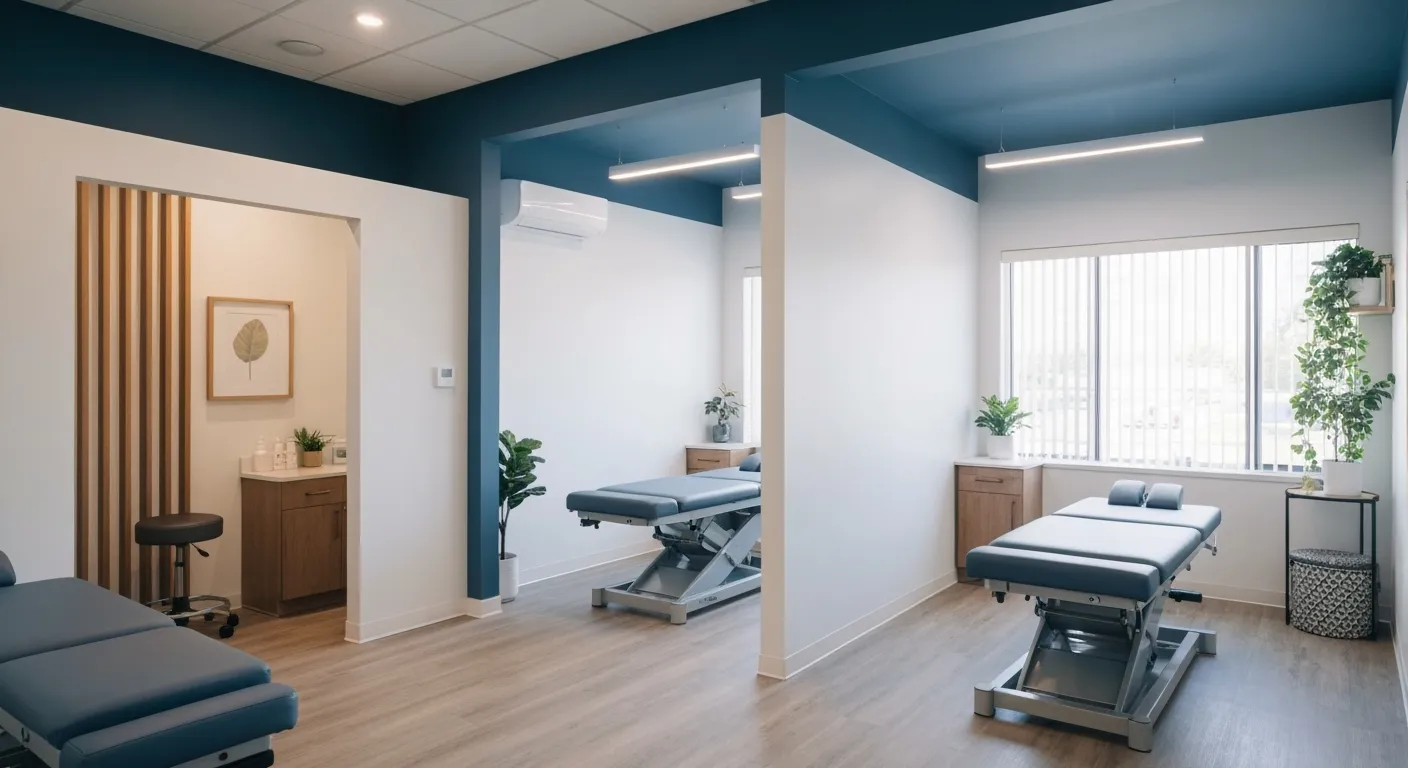
Choosing the Right Chiropractor: Key Factors to Consider Before Your First Appointment

Non-Invasive Treatment Alternatives: A Holistic Approach to Pain Relief

Corrective Exercises to Support Long-Term Relief from Chronic Pain

Exploring Non-Surgical Approaches to Spine Health and Wellness

Tips for Daily Habits That Keep Your Spine Strong

Success Stories: How Chiropractic Treatments Changed Lives

Why Focusing on the Root Cause of Pain Leads to Better Outcomes

Nutritional Counseling and Its Impact on Overall Wellness and Recovery

Patient Testimonials That Showcase the Power of Chiropractic Care

Preparing for Your First Chiropractic Appointment: What You Need to Know
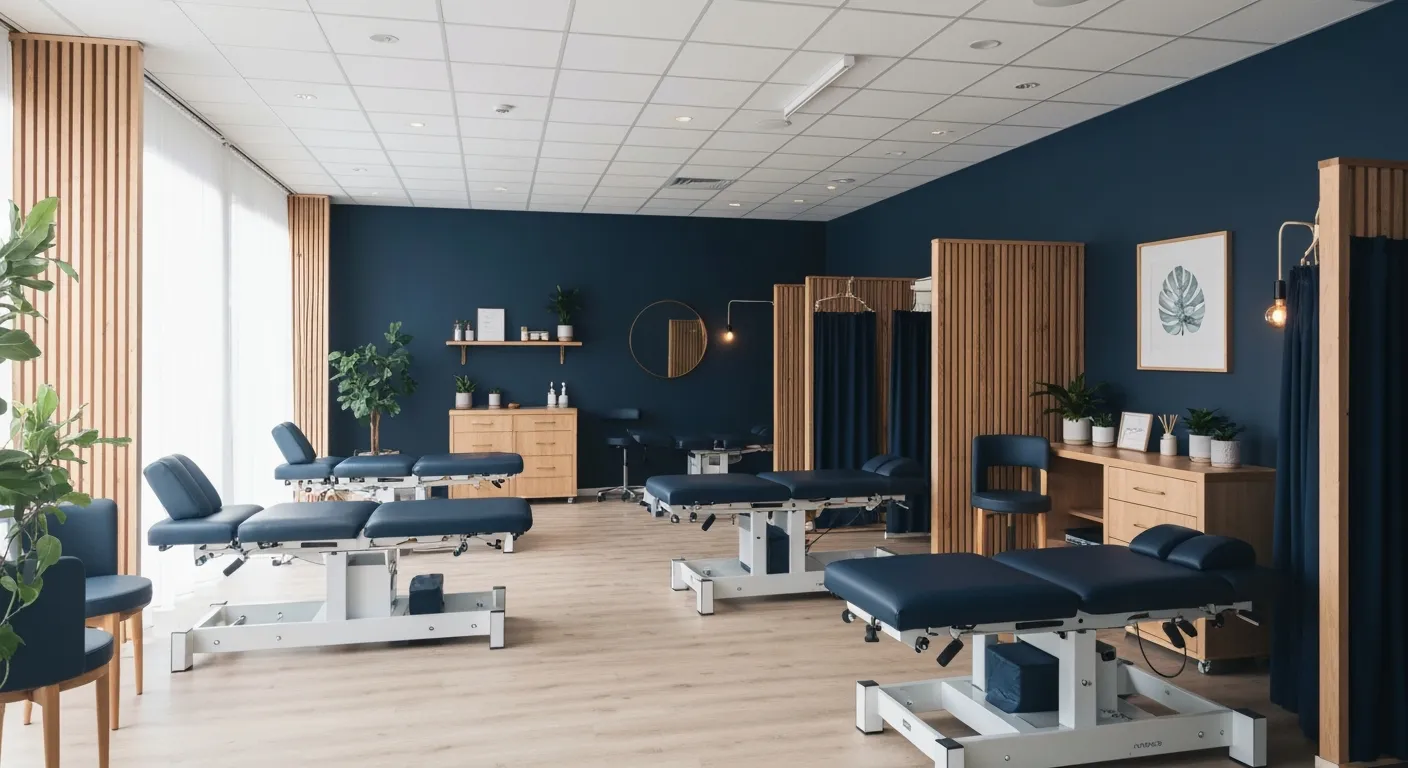
Holistic Treatment Options: Beyond Surgery for Pain Relief

Holistic Pain Relief Methods That Avoid Surgery

Nutritional Strategies for Supporting Spine Health and Recovery

First Chiropractic Visit: What Happens and How to Prepare

Chiropractic Patient Success Stories: Inspiring Journeys to Wellness
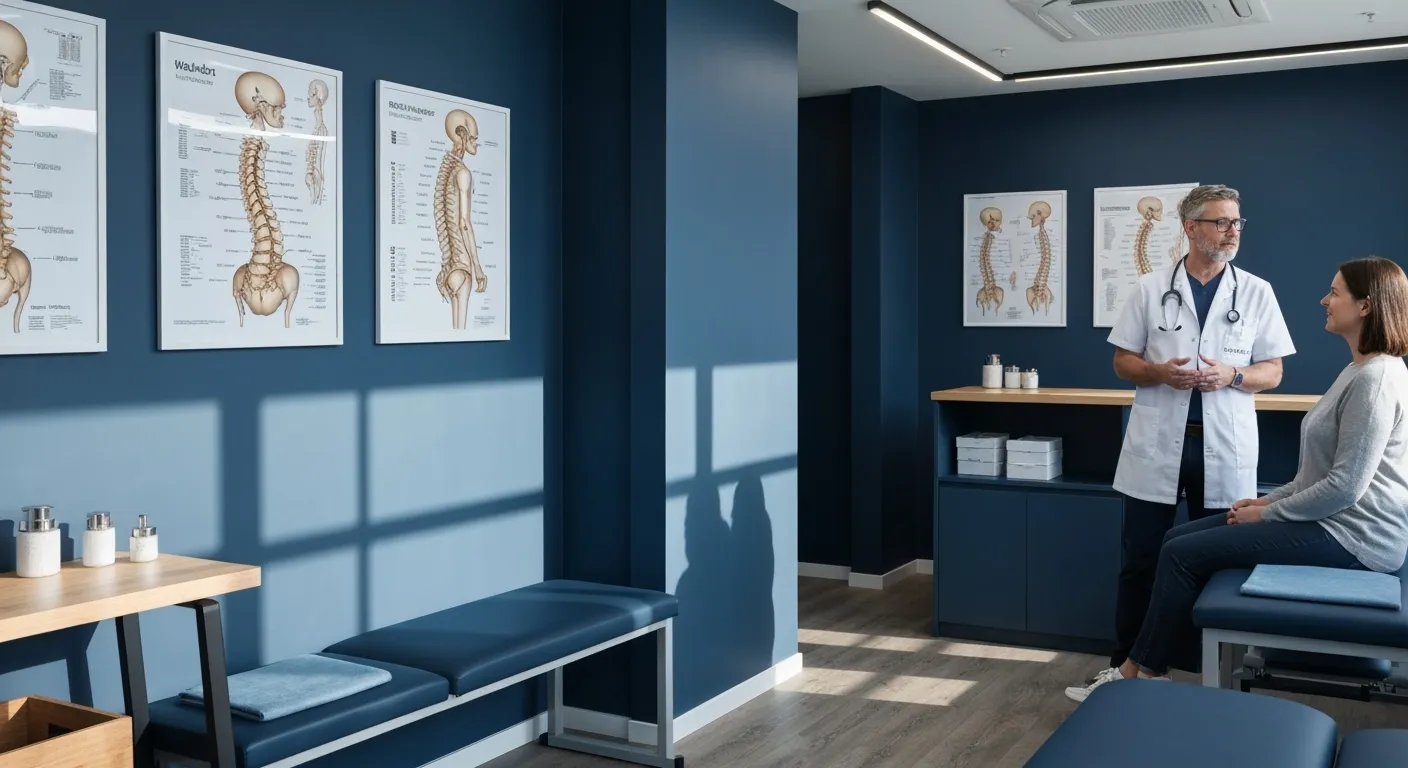
Effectiveness of Spinal Decompression Therapy in Managing Sciatic Nerve Pain

Addressing Pain at Its Source: Why Treating the Root Cause Matters

Corrective Exercise Programs Designed for Long-Term Pain Prevention

Healthy Lifestyle Advice for Maintaining Spinal Alignment
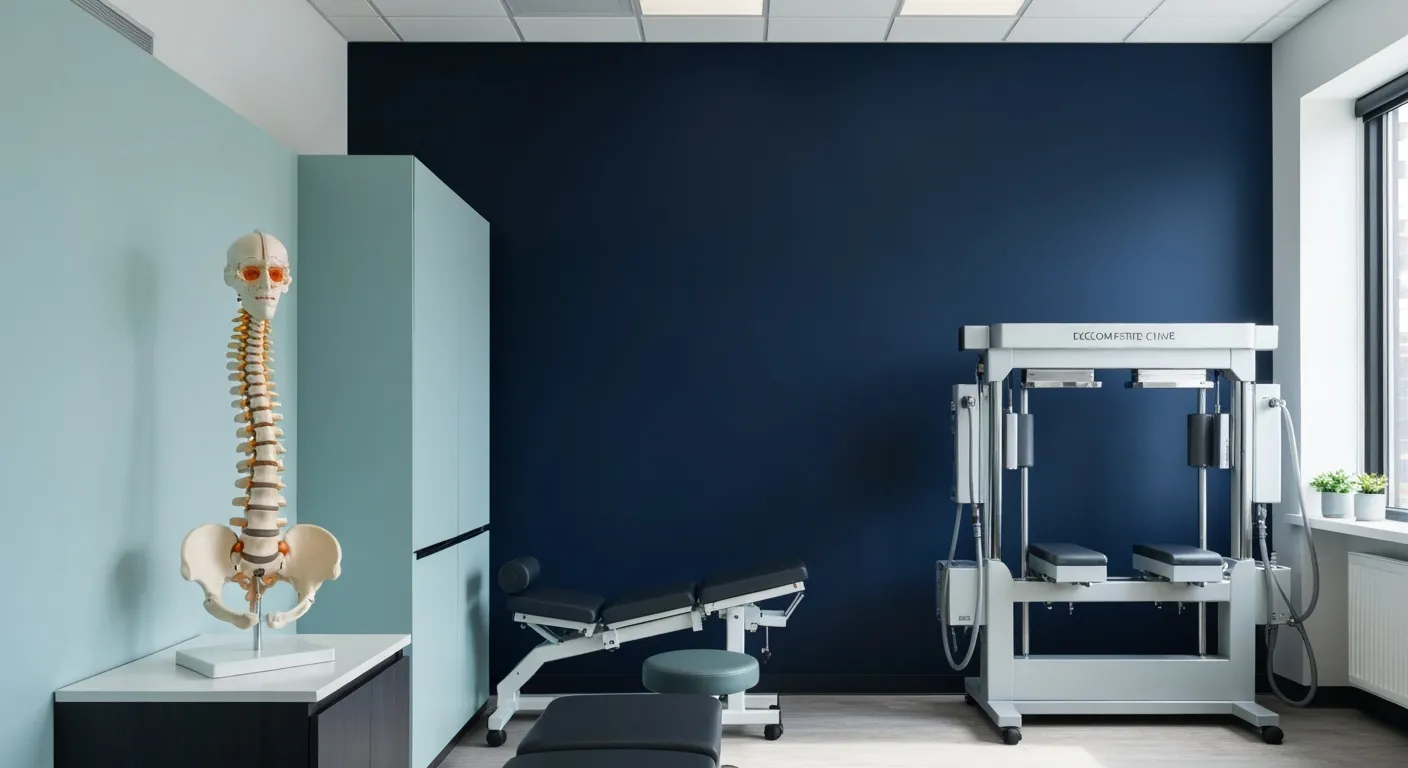
Understanding Spinal Decompression as a Treatment for Sciatica Pain
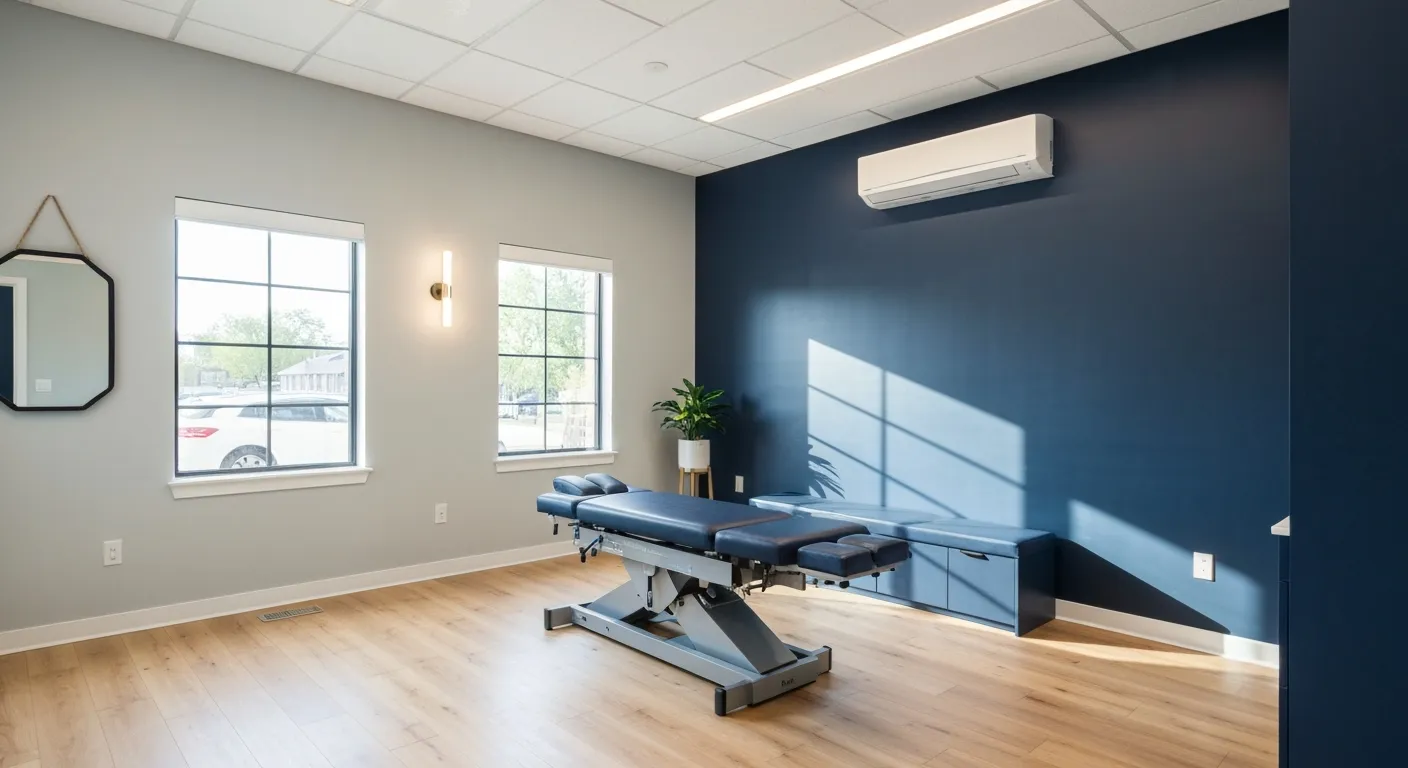
Benefits of Chiropractic Care Specifically for Back Pain Relief

Understanding Gait Analysis in Physiotherapy
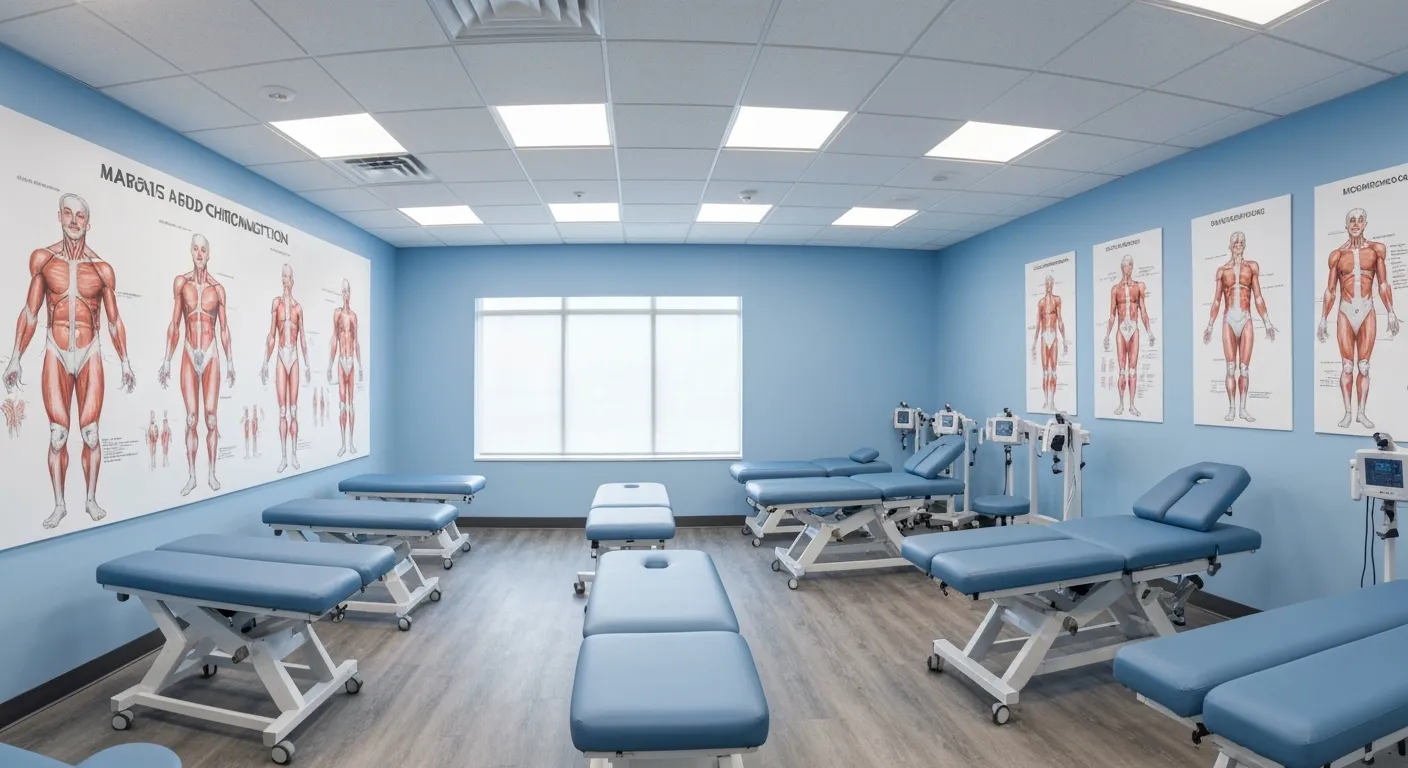
The Difference Between Muscle Soreness and Dysfunction

Workplace Stress Statistics: How Muscle Tension Impacts Productivity

How Physiotherapy Improves Mobility for Seniors

How to Communicate Pain Levels to Your Therapist Effectively
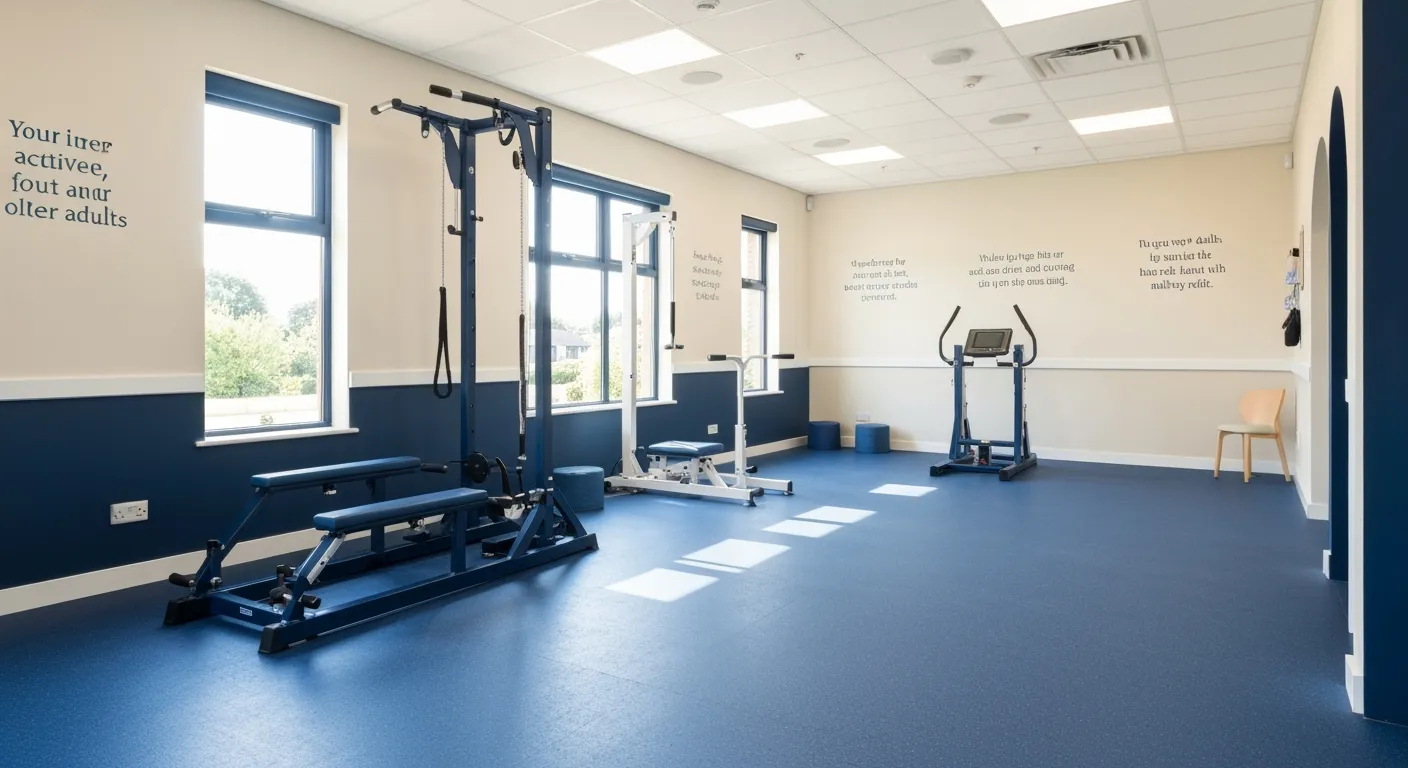
Physiotherapy Interventions for Balance and Fall Prevention

How Physiotherapy Helps Post-Surgical Recovery

Lifestyle Advice Everyone with Back Pain Should Follow

Chiropractic Industry Statistics: Growth, Demand, and Future Trends

Myofascial Release: What It Is and Why It Matters

Chiropractic Care vs. Traditional Medicine: Cost and Effectiveness Statistics

Ergonomic Workspace Tips to Support Spinal Health

Why Proper Breathing Matters During a Massage Session
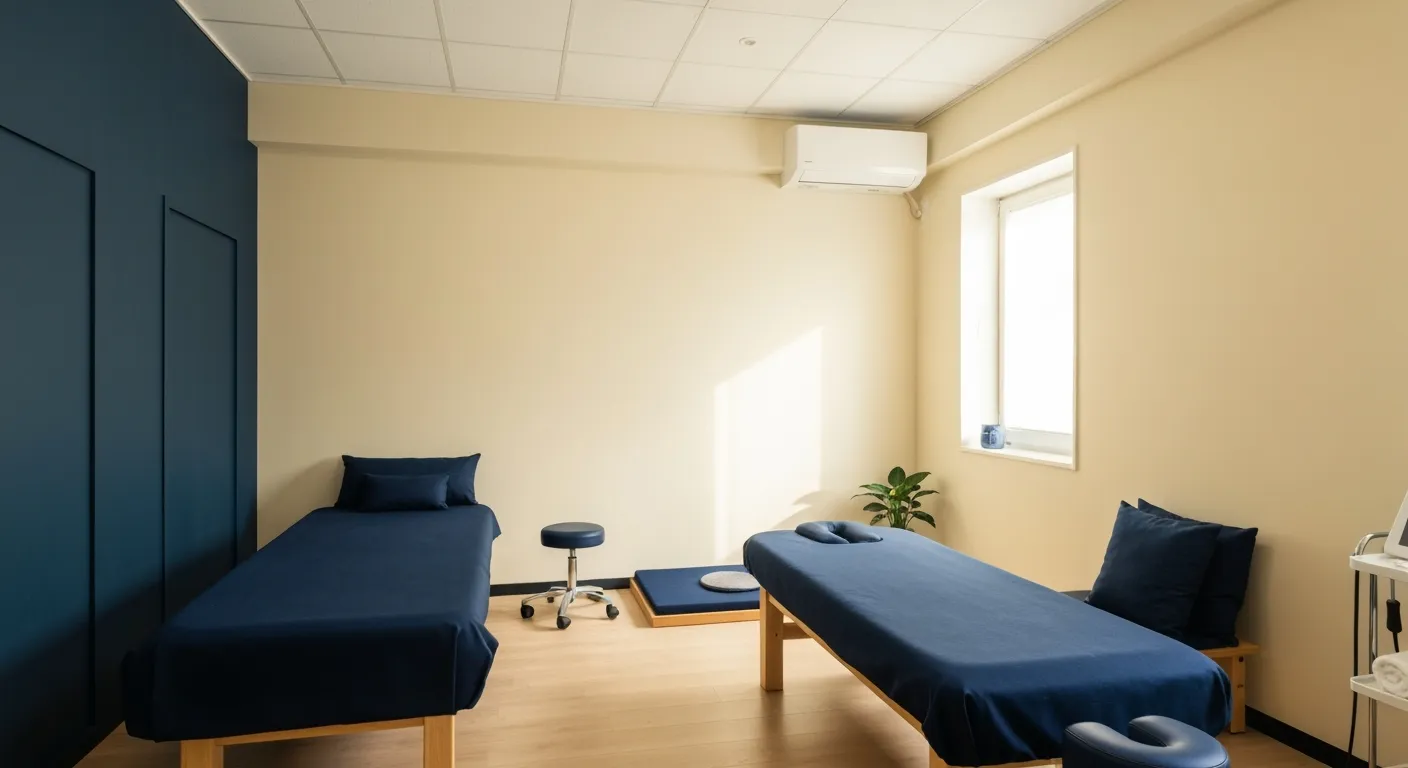
Client Retention Trends in the Therapeutic Bodywork Industry

Why Physiotherapy Is Key in Preventing Re-Injury

How Massage Therapy Supports Natural Pain Relief
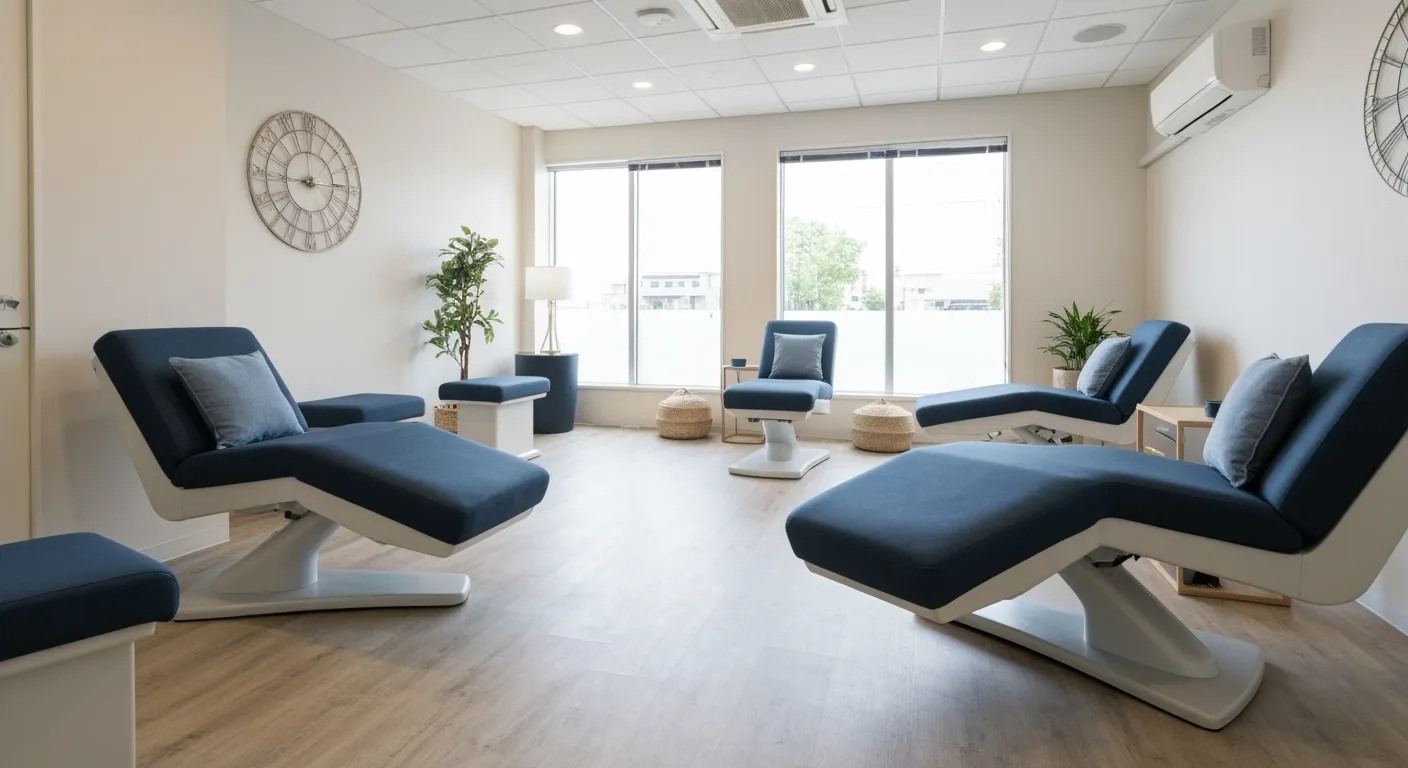
Healthcare Cost Reduction Through Preventive Bodywork Use

Athlete Massage Statistics: Pre-Event vs. Post-Event Outcomes

Massage for Migraine and Headache Relief

